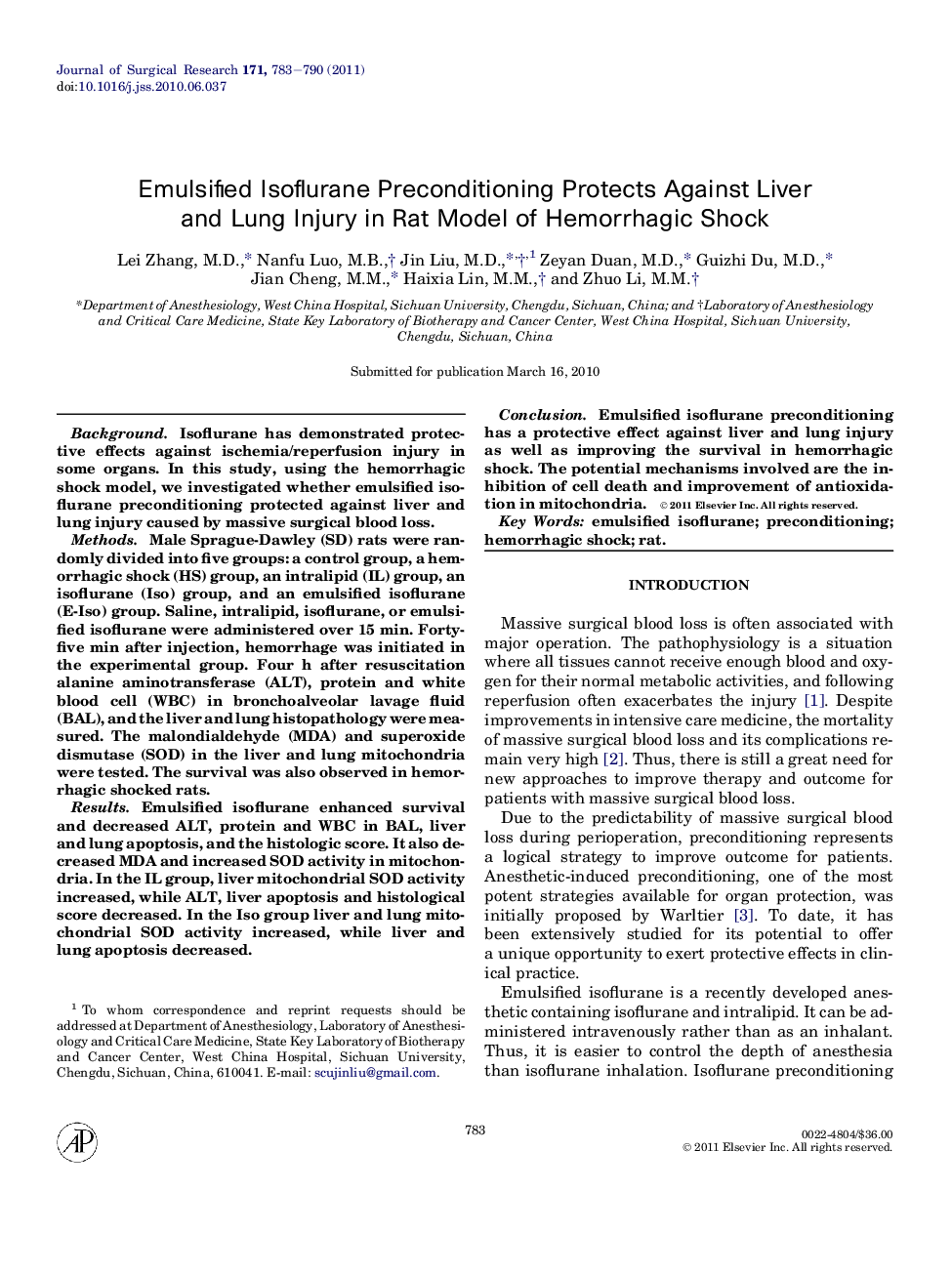| Article ID | Journal | Published Year | Pages | File Type |
|---|---|---|---|---|
| 4301881 | Journal of Surgical Research | 2011 | 8 Pages |
BackgroundIsoflurane has demonstrated protective effects against ischemia/reperfusion injury in some organs. In this study, using the hemorrhagic shock model, we investigated whether emulsified isoflurane preconditioning protected against liver and lung injury caused by massive surgical blood loss.MethodsMale Sprague-Dawley (SD) rats were randomly divided into five groups: a control group, a hemorrhagic shock (HS) group, an intralipid (IL) group, an isoflurane (Iso) group, and an emulsified isoflurane (E-Iso) group. Saline, intralipid, isoflurane, or emulsified isoflurane were administered over 15 min. Forty-five min after injection, hemorrhage was initiated in the experimental group. Four h after resuscitation alanine aminotransferase (ALT), protein and white blood cell (WBC) in bronchoalveolar lavage fluid (BAL), and the liver and lung histopathology were measured. The malondialdehyde (MDA) and superoxide dismutase (SOD) in the liver and lung mitochondria were tested. The survival was also observed in hemorrhagic shocked rats.ResultsEmulsified isoflurane enhanced survival and decreased ALT, protein and WBC in BAL, liver and lung apoptosis, and the histologic score. It also decreased MDA and increased SOD activity in mitochondria. In the IL group, liver mitochondrial SOD activity increased, while ALT, liver apoptosis and histological score decreased. In the Iso group liver and lung mitochondrial SOD activity increased, while liver and lung apoptosis decreased.ConclusionEmulsified isoflurane preconditioning has a protective effect against liver and lung injury as well as improving the survival in hemorrhagic shock. The potential mechanisms involved are the inhibition of cell death and improvement of antioxidation in mitochondria.
